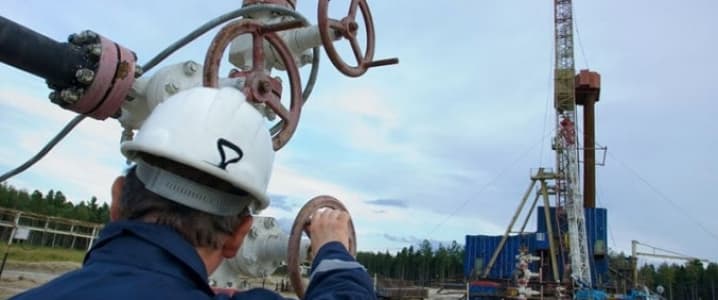U.S. shale is the lowest cost option for new oil production and is likely to be more competitive than conventional offshore drilling, according to a new report from Wood Mackenzie.
The U.S. shale industry has weathered the oil price downturn, tweaking drilling practices and cutting costs in order to stay in business. A new report from Wood Mackenzie finds that the industry is proving to be resilient and flexible in the face of the worst oil market crisis in three decades.
The report concludes that U.S. shale companies have managed to cut costs by as much as 40 percent since 2014. Much of that comes from lower costs from equipment suppliers and oilfield services firms. But it also comes from improved productivity from the average shale well. Instead of drilling anywhere and everywhere, U.S. shale companies are getting better at finding the “sweet spots.”
Intriguingly, the report finds that conventional oil drillers have not had as much success in reducing costs. Non-shale drilling projects only achieved cost reductions on the order of 10 to 12 percent, Wood Mackenzie found. That means that a lot of large oil projects are not economical with oil prices at $60 per barrel.
By comparison, the Eagle Ford has an average breakeven price of $48 per barrel for Brent, and the Wolfcamp in the Permian Basin has a breakeven price of just $39 per barrel.
In other words, America’s shale industry is now more competitive than places like the North Sea, West Africa or other deepwater drilling areas, places that have seen high levels of interest and investment for a much longer period of time. “There are more opportunities to invest in the U.S., and that’s where the investment will take place,” Simon Flowers of Wood Mackenzie said.
Related: EIA Reports 2.5M Barrel Draw To U.S. Crude Oil Inventories
Wood Mackenzie found that 60 percent of the oil production that is profitable with oil at $60 per barrel comes in the form of shale production, compared to only 20 percent that is deep water.
As a result, the number of megaprojects that have been given final investment decisions has dropped off a cliff recently. Between 2007 and 2013 the global oil industry greenlit 40 large projects per year. But that figure fell to just eight in 2015 as large projects became unviable with oil prices less than half of what they were in 2014. A Wood Mackenzie estimate from earlier this year found that the industry has put off investment decisions on about 68 major projects across the globe, deferring some $380 billion in investment.
In short, future investment dollars will increasingly find their way into U.S. shale at the expense of deepwater. This backs up recent data from other outlets, such as Rystad Energy, which a few weeks ago released data showing much greater interest in smaller, short-cycle drilling projects as opposed to the megaprojects of the past. Shale is comparatively lower risk, as giant oil projects require years of investment and billions of dollars while they also tend to suffer from cost overruns and frequent delays.
But not all shale drillers are made the same. Low oil prices have forced the default rate for U.S. shale drillers to a record high, according to Fitch Ratings. Fitch says that almost one in three oil producers in the U.S. that used high-risk debt to finance their drilling frenzy have now defaulted on a combined $29 billion in debt. By the end of the year, the defaults could encompass $40 billion in debt. In the five years before oil prices started to crash in 2014, the shale industry took on $500 billion in risky debt, The Houston Chronicle reports.
Related: Can OPEC Supply The Tighter Oil Market It Predicts?
The result is a major shake out in the industry. The exact tally is a little murky, but at least 130 North American oil and gas companies have declared Chapter 11 bankruptcy since the beginning of 2015, a number that is surely set to rise as oil prices fall back from $50 per barrel.
And the outlook for oil prices is not exactly bright. The market has been oversupplied for quite some time, and while supplies have retreated, demand is now suddenly looking not quite as robust as many had thought. Chinese demand continues to show signs of weakness. And as the IEA noted in its latest Oil Market Report, exceptionally high volumes of gasoline sitting in storage is dragging down oil prices.
"It doesn't look as though we'll put much of a dent in global (oil) inventories until the second half of 2017," Tim Evans, energy futures specialist at Citigroup, told Reuters in an interview. "The market is making considerable progress relative to the surplus of the past two years, but it's going to take more time to bring inventories back down to more normal levels.”
By Nick Cunningham of Oilprice.com
More Top Reads From Oilprice.com:
- EIA Expects Uptick In U.S. NatGas Production As Prices Soar
- IEA: Gasoline Glut Could Cause Oil Price Rout
- U.S. Production Is Falling, Why Isn’t Oil Recovering Faster?

















